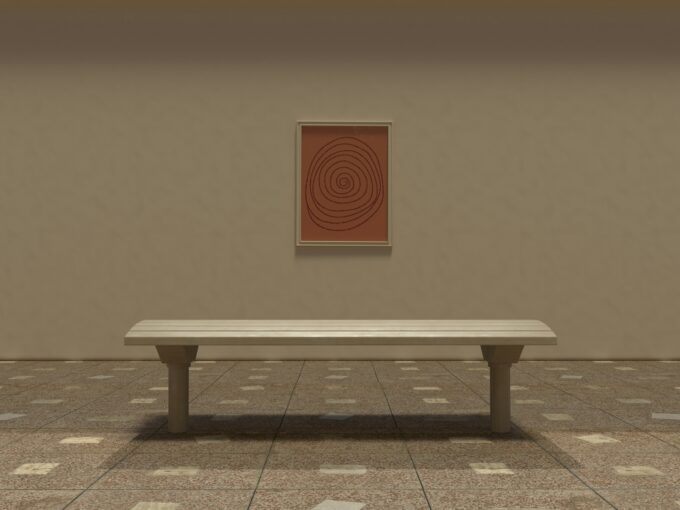
Image by Allison Saeng.
In the old days, some museum directors wrote about their activity. Sherman Lee, longtime director of the Cleveland Museum, published instructive accounts. And James Cuno, director of numerous museums, offered major accounts about controversies in his field. But nowadays, administrators are generally too busy to write. And certainly it’s not customary for directors to publish in Artforum, For that reason, “Present Tense,” an essay by Eric Crosby, director of the Carnegie Museum of Art, in Pittsburgh, which appeared in the May, 2025 issue is to be welcomed. I am an outsider, an academic who has never met Crosby. But I live in Pittsburgh and have published a relevant book: A History of the Display of Art in Public Galleries (2006), as well as interviews, in collaboration with Joachim Pissarro, with numerous museum directors, which appear online in The Brooklyn Rail. And in a recent scholarly anthology, A Companion to Curation (2019), I present a history of the Carnegie International. I feel a very real attachment to the Carnegie, for it is the first museum in which, thanks to a number of generous curators and directors, I came to feel almost at home. I am especially indebted to John Caldwell, the first curator I met. And, later, to Richard Armstrong, who invited me to curate a show of local artists, which was a most instructive experience.
Crosby asks how he might respond to the recent crisis, much written about in the press, of the public art museum. Thanks to the critiques presented by the movement of Black Lives Matter, by the COVID-19 epidemic, and, more broadly, by funding crises, our museums feel considerable pressure. As has often been reported, there have been many protests. What does the public want? And what can a museum director tell the public from his vantage point? These are the essential questions that Crosby deals with. Our artistic resources are vast, he observes. So let’s consider what to do with them! “What if (the). . . museum seize(d) the opportunity to reinvent itself, , , reimagine its role in the world, and create lasting relationships that give form to contemporary art history?” This, in my judgment, is the right question to ask. Crosby wants museums to respect their audiences, engaging their active participation.
In a recent book, Art as Therapy (2013), Alain de Botton and John Armstrong developed one possible reading of these concerns. Too often, they observe, museums are primarily concerned with presenting information about artworks. What, rather, museums should do, so they argue, is demonstrate what artworks can teach us about our lives, our emotional dilemmas and our unfulfilled needs. And so they write: “The ultimate ambition of our engagement with art is that we should find ways to enact the values of art in the world.” I certainly have problems with the argument of de Botton and Armstrong. But what is valuable, I think, is this suggestion that the practice of art education needs to change. And in that spirit, I will tell a relevant personal story, which comes from before Crosby’s tenure in Pittsburgh.
One of the resources of the Carnegie is the Charles “Teenie” Harris Archive. Harris (1908-1998) was an African-American photographer who for some decades covered the Black community for the newspapers. Some years after his death, when it seemed that the body of his artworks might not be preserved, the Carnegie purchased Harris’ collection of 80,000 negatives from his estate. He photographed anyone newsworthy who came to Pittsburgh. And then when a large display of these photographs was organized in 2012, it happened that I took to the museum an old friend, an elderly Black woman who had never visited her museum. She was so surprised at this exhibit, which showed the Pittsburgh she knew, that she invited her granddaughter to accompany her. We spent a long time together looking. And me, I was immensely satisfied, for here, I saw, was how the museum could expand its audience. What better illustration of the claims of Crosby’s essay could be imagined?
Here, finally, is another example that employs materials already in the Carnegie’s reserves. Some years ago when Arthur Danto and I walked through the museum, he observed that he had known many of the artists present in this collection. Usually, the reserves are not exhibited, but museums tend not to throw anything away. And so it would be instructive for anyone interested in the history of taste to present these works, many by artists who are now almost forgotten? It would be interesting to see what was not chosen for display in the permanent collections. I bet that many Pittsburghers would take an interest in such an exhibition. The Carnegie International and other large museum exhibitions aim to introduce the international art world to local audiences. But what’s also important, especially right now, is that our museums attract and respond to local audiences.
The post Present Tense: A Reply to Eric Crosby appeared first on CounterPunch.org.
This post was originally published on CounterPunch.org.